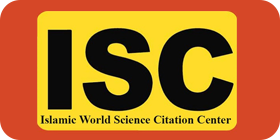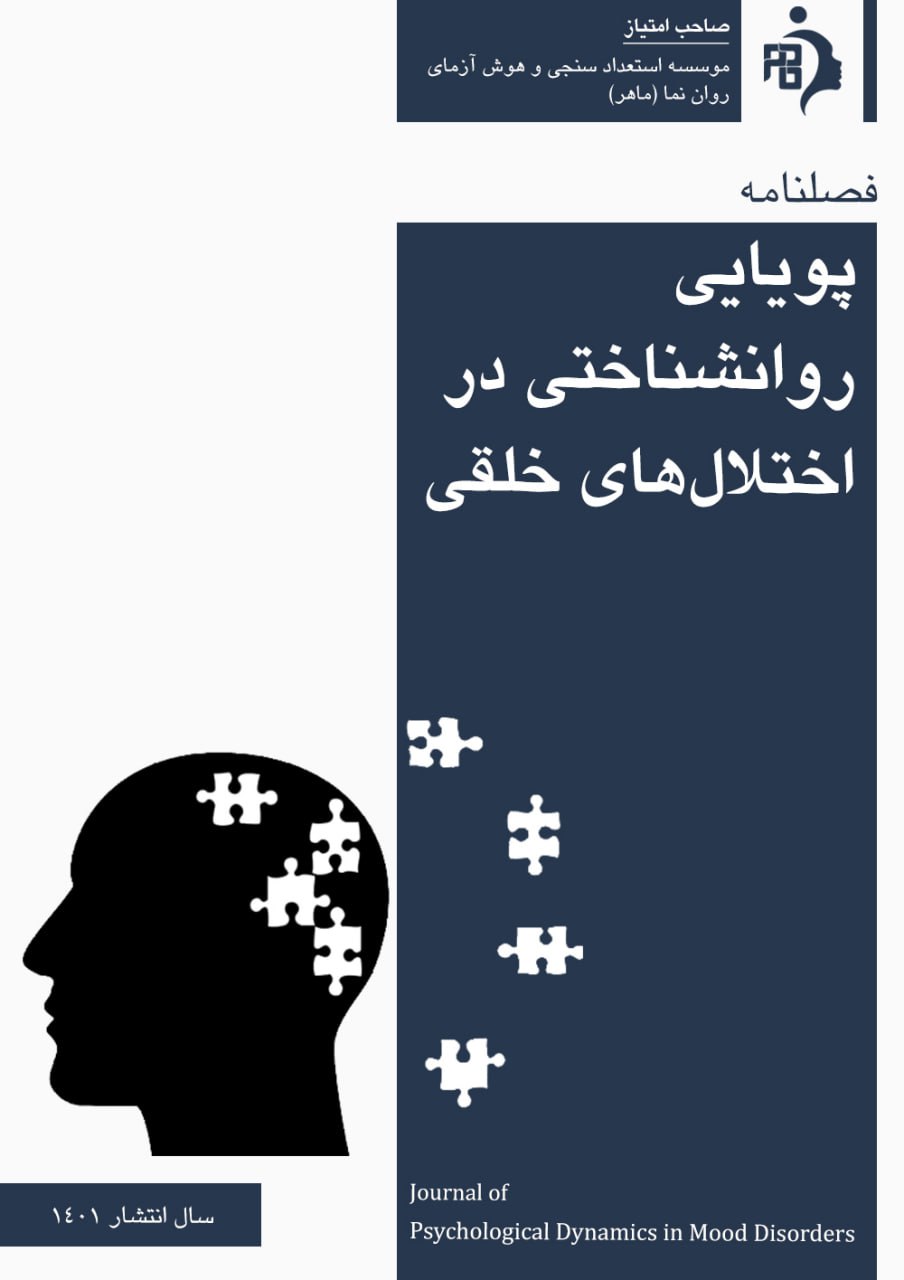Explaining the Model of Post-Traumatic Growth Based on Flourishing with the Mediating Role of Problem-Solving Ability
Keywords:
Post-Traumatic Growth, Flourishing, Problem-Solving AbilityAbstract
Objective: The present study aimed to explain the model of post-traumatic growth based on flourishing with the mediating role of problem-solving ability.
Methodology: The statistical population of this descriptive-correlational study consisted of 400 individuals with education above a high school diploma, aged between 20 and 60 years, who had reported at least minimal psychological trauma. The sample was selected through convenience sampling. A response link to the questionnaires was created and distributed to websites and psychological service centers along with an appropriate explanation. Participants responded to the Post-Traumatic Growth Inventory by Tedeschi and Calhoun (1996), the Flourishing Scale by Soleimani et al. (2015), and the Problem-Solving Inventory by Heppner and Petersen (1982). Data analysis was conducted using normality tests, Pearson correlation coefficient, and structural equation modeling (SEM).
Findings: The study findings indicated a good fit of the model and confirmed the main research hypothesis. Based on the results of examining the indirect effect of flourishing through problem-solving on post-traumatic growth, the mediating role of problem-solving in the relationship between flourishing and post-traumatic growth was confirmed.
Conclusion: Consequently, post-traumatic growth can be predicted based on flourishing and the mediating role of problem-solving ability.
Downloads
References
Abedi, G., Ataeifar, R., & Ghamari, M. (2024). The Effectiveness of Group Marital Conflict Resolution Training Based on Choice Theory on Emotional Divorce and Hope for Life in Married Women. International Journal of Education and Cognitive Sciences, 5(3), 136-146. https://doi.org/10.61838/kman.ijecs.5.3.10
Arnout, B. A. (2020). A structural equation model relating unemployment stress, spiritual intelligence, and mental health components: Mediators of coping mechanism. Journal of Public Affairs, 20(2), e2025. https://doi.org/10.1002/pa.2025
Azizi Mahmoudabad, M., Rostami Mosani, K., & Mirshah Jafari, S. E. (2017). Investigating the Impact of Problem-Solving Strategies on the Development of Religious Education Indices from Teachers' Perspectives. Journal of Research in Islamic Education Issues, 25(35), 5-68. https://iej.ihu.ac.ir/article_200943.html?lang=en
Babapour Kheraldin, J., Ejei, M. J., Rasoulzudeh Taba Tabei, K., & Fathi Ashtiani, A. (2002). Examining the Relationship Between Problem-Solving Styles, Conflict Resolution Styles, and Psychological Well-Being Among Tarbiat Modares University Students. Journal of Psychology, 7(1), 3-16. https://www.sid.ir/paper/54504/en
Bandura, A. (1986). Social Foundations of Thought and Action: A Social Cognitive Theory. Prentice Hall. http://books.google.com/books?id=BqWx45r7uWwC
Bandura, A. (1997). Self-Efficacy: The Exercise of Control. W. H. Freeman. https://psycnet.apa.org/record/1997-08589-000
Barlow, D. H. (2014). Clinical Handbook of Psychological Disorders (5th ed.). Guilford Press. https://books.google.com/books/about/Clinical_Handbook_of_Psychological_Disor.html?id=FCTyAgAAQBAJ
Cassidy, T. (2002). Problem-solving style, achievement motivation, psychological distress and response to a simulated emergency. Counseling Psychology Quarterly, 15, 325-332. https://doi.org/10.1080/0951507021000029658
D'Zurilla, P. (1992). Problem-solving therapy for social problems. In K. S. L. C. E. Beck & R. S. Barlow (Eds.), Handbook of Therapy and Behavioral Change (Vol. 4, pp. 415-448). Guilford Press.
Dejkam, M., & Zargham Hajebi, M. (2008). Transformation: A Study and Analysis of Adaptive Responses to Trauma. Quarterly Journal of Thought and Behavior, 3(10).
Duan, W., Guo, P., & Gan, P. (2015). Relationships among trait resilience, virtues, posttraumatic stress disorder, and post-traumatic growth. PLoS One, 10(5), e0125707. https://doi.org/10.1371/journal.pone.0125707
Ebrahimi, S., Ahmadi, K., & Farrokhi, N. (2023). The Effectiveness of Supportive Therapy on Psychological Capital and Post-Traumatic Growth in Women with Multiple Sclerosis. Journal of Applied Family Therapy, 4(1), 268-285. https://doi.org/10.61838/kman.aftj.4.1.14
Eini, S. (2023). The Effectiveness of Prolonged Exposure Therapy Combined with Dialectical Behavior Therapy on Improving Post-Traumatic Growth in Veterans with Post-Traumatic Stress Disorder. Journal of Clinical Psychology(3), 95-106. https://jcp.semnan.ac.ir/article_8389.html
Entazari, S., Tajari, B., Nejat, H., & Ahadi, H. (2023). Prediction of Post-Traumatic Growth Based on Coping Styles with the Mediating Role of Self-Esteem in Recovered COVID-19 Patients. Journal of Psychological Sciences, 22(131), 2285-2300. https://psychologicalscience.ir/article-1-2007-en.html
Fimasari, S. (2024). Analyzing the Effects of Spiritual Intelligence, Innovation and Competence on Employee Appearance at PT. Asam Jawa. Randwick International of Social Science Journal, 5(1), 93-102. https://doi.org/10.47175/rissj.v5i1.893
Fredrickson, B. L. (2001a). The broaden-and-build theory of positive emotions. Review of General Psychology, 5(2), 219-265. https://pmc.ncbi.nlm.nih.gov/articles/PMC1693418/
Fredrickson, B. L. (2001b). The role of positive emotions in positive psychology: The broaden-and-build theory of positive emotions. The American psychologist, 56(3), 218-226. https://doi.org/10.1037//0003-066X.56.3.218
Hepner, M. A., & Krauss, H. F. (1988). The Problem-Solving Inventory (PSI): Measuring problem-solving confidence and style. Journal of counseling psychology, 35(2), 222-226.
Heppner, P. P., & Kraus, D. R. (1988). A meta-analysis of outcome research on cognitive-behavioral group therapy. Journal of counseling psychology, 35(1), 45-50.
Keyes, C. L. (2002). The mental health continuum: From languishing to flourishing in life. Journal of Health and Social Behavior, 43(2), 207-222. https://doi.org/10.2307/3090197
Látos, M., Lázár, G., Ondrik, Z., Szederkényi, E., Hódi, Z., Horváth, Z., & Csabai, M. (2021). Positive Psychology Intervention to Improve Recovery after Renal Transplantation: A Randomized Controlled Trial. Journal of Contemporary Psychotherapy, 52, 35-44. https://doi.org/10.1007/s10879-021-09515-6
Manapour, M., & Afkaneh, S. (2023). The Effectiveness of Online Reality Therapy on Post-Traumatic Growth and Psychological Distress in Bereaved Individuals During the COVID-19 Pandemic. Journal of Psychology Growth(8), 87-96. http://frooyesh.ir/article-1-4707-en.html
Mohammadi, F., & Sahebi, A. (2001). Examining Problem-Solving Styles in Depressed Individuals and Comparing Them with Normal Individuals. Journal of Psychological Sciences, 1(1), 24-42. https://www.sid.ir/paper/420489/fa
Mohammadi, N. (2004). The Relationship Between Problem-Solving Styles and General Health. Journal of Psychology, 8(32), 332-336. https://www.sid.ir/paper/54543/en
Navya, G., & Sharma, S. (2022). Impact of spiritual intelligence on perceived stress among male and female university students. International Journal of Bio-Resource and Stress Management, 13(Jan, 1), 62-68. https://doi.org/10.23910/1.2022.2511a
Nezamipour, E., Abdolmanafi, A., & Besharat, M. A. (2015). Comparison of Coping Strategies and Problem-Solving Styles in Depressed and Normal Students. Journal of Psychology and Cognitive Psychiatry, 2(2), 59-69. http://shenakht.muk.ac.ir/browse.php?a_id=142&slc_lang=en&sid=1&printcase=1&hbnr=1&hmb=1
Nezu, A. M. (1990). Effect of stress from current problem: Comparison to major life events. Journal of Psychology, 847-857. https://doi.org/10.1002/1097-4679(198611)42:6<847::AID-JCLP2270420602>3.0.CO;2-G
Nezu, A. M., & Ronan, G. F. (1985). Life stress, current problem-solving, and depressive symptoms: An integrative model. Journal of Counseling and Clinical Psychology, 53(5), 693-697. https://doi.org/10.1037/0022-006X.53.5.693
Nikogoftar, M., & Shourangiz, K. (2023). Developing a Post-Traumatic Growth Model Based on Emotional Schemas with the Mediating Role of Self-Compassion Among Widowed Women Who Lost Their Husbands to COVID-19. Journal of Positive Psychology Research(2), 83-102. https://ppls.ui.ac.ir/article_27834.html?lang=en
Ochoa, C., Casellas-Grau, A., Vives, J., Font, A., & Borràs, J. M. (2017). Positive psychotherapy for distressed cancer survivors: Posttraumatic growth facilitation reduces posttraumatic stress. International Journal of Clinical and Health Psychology, 17(1), 28-37. https://doi.org/10.1016/j.ijchp.2016.09.002
Pakenham, K. I. (1999). Adjustment to multiple sclerosis: Application of a stress and coping model. Health Psychology, 18, 383-392. https://doi.org/10.1037/0278-6133.18.4.383
Park, C. L. (2010). Making sense of traumatic experiences: Toward a constructive cognitive-behavioral model of posttraumatic growth. Psychological bulletin, 136(3), 453-489. https://doi.org/10.1037/a0011203
Piaget, J. (1954). The Construction of Reality in the Child. Basic Books. https://doi.org/10.1037/11168-000
Salemi, S., Rashidi, A., Zehtab Najafi, A., & Seyed-Mousavi, S. A. (2017). The Simple and Multiple Relationships Between Religious Beliefs, Psychological Hardiness, and Perceived Social Support with Post-Traumatic Growth in Patients with Multiple Sclerosis. Journal of Psychology and Religion, 10(2), 38. https://www.magiran.com/paper/1705099/the-simple-and-complex-relationship-of-the-religious-beliefs-psychological-hardness-and-realized-social-support-with-post-traumatic-growth-among-the-people-with-ms?lang=en
Saltzman, K. M., Weems, C. F., & Carrion, V. G. (2006). IQ and post-traumatic stress symptoms in children exposed to interpersonal violence. Child Psychiatry and Human Development, 36(3), 175-178. https://doi.org/10.1007/s10578-005-0002-5
Satpathy, T. K., & Samanta, S. (2020). Influence of Spiritual Intelligence on Human Psychology: A Review. Wutan Huatan Jisuan Jishu, 16. https://www.researchgate.net/publication/358796752_Influence_of_Spiritual_Intelligence_on_human_psychology-_a_review
Seligman, M. E., & Csikszentmihalyi, M. (2000). Positive Psychology: An Introduction. American psychologist, 55(1), 5-14. https://doi.org/10.1037/0003-066X.55.1.5
Seligman, M. E. P. (2011). Flourish: A Visionary New Understanding of Happiness and Well-Being. Simon and Schuster. https://ppc.sas.upenn.edu/people/martin-ep-seligman
Soltani, M., Kamyabi, M., Bahrainizadeh, A., & Andishmand, V. (2024). Design and Presentation of a Model for the Relationship Between the Five Dimensions of Personality and Problem-Solving Skills and Academic Help-Seeking in Female Students. Journal of Psychological Dynamics in Mood Disorders (PDMD), 3(1), 175-186. https://doi.org/10.22034/pdmd.2024.449713.1066
Tajeryan, Z., Afrooz, G. A., & Nouryghasemabadi, R. (2022). Social Problem Solving in Women with PTSD and Addiction. Psychology of Woman Journal, 3(4), 84-91. https://doi.org/10.61838/
Tajeryan, Z., Afrooz, G. A., & Nouryghasemabadi, R. (2023). Emotion Regulation in Women with PTSD and Addiction. Psychology of Woman Journal, 4(2), 160-168. https://doi.org/10.61838/kman.pwj.4.2.19
Tedeschi, R. G., & Calhoun, L. G. (1996). The Posttraumatic Growth Inventory: Measuring the Positive Legacy of Trauma. Journal of Traumatic Stress, 9(3), 455-471. https://doi.org/10.1002/jts.2490090305
Whitfield, K. E., Allaire, J. C., & Wiggins, S. A. (2004). Relationships among health factors and everyday problem solving in African-Americans. Health Psychology, 23, 641-644. https://doi.org/10.1037/0278-6133.23.6.641
Zadhasan, Z., & Gholamzadeh Jofreh, M. (2023). The effectiveness of emotion-focused cognitive therapy on corona anxiety, sense of coherence and post-traumatic growth in women recovered from corona. Applied Family Therapy Journal (AFTJ), 4(1), 672-687. https://doi.org/10.61838/kman.aftj.4.1.34
Zar'an, M., Asadollahpour, A., & Bakhshipour Roudsari, A. (2007). The Relationship Between Emotional Intelligence and Problem-Solving Styles with General Health. Iranian Journal of Psychiatry and Clinical Psychology, 13(2), 166-172. https://ijpcp.iums.ac.ir/article-1-167-en.html
Zargham Hajebi, M. (2009). Adaptive Effects of Trauma: A Conceptual Review. Quarterly Journal of Thought and Behavior, 3(11). https://www.sid.ir/paper/172230/en
Zoellner, T., & Maercker, A. (2006). Posttraumatic growth in clinical populations: a systematic review. Clinical Psychology: Science and Practice, 13, 227-239. https://doi.org/10.1111/j.1468-2850.2006.00039.x









